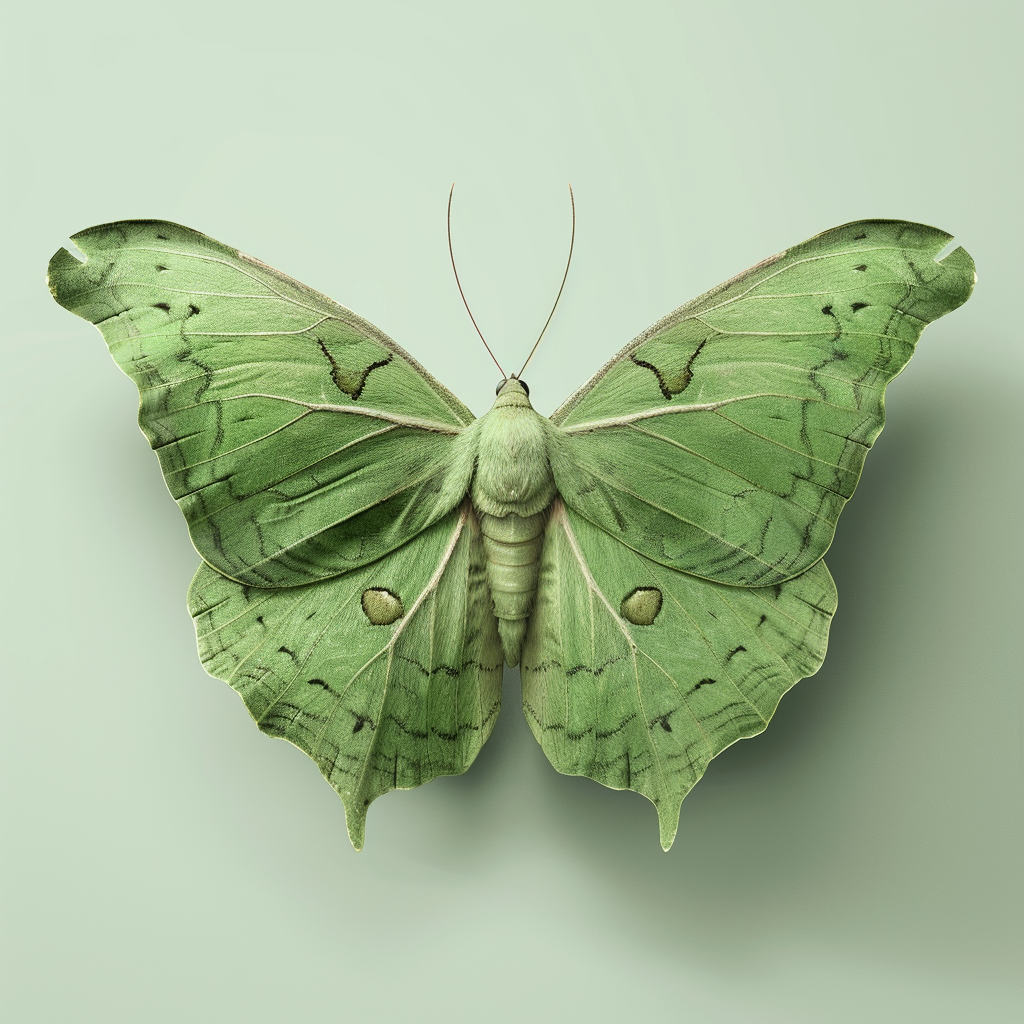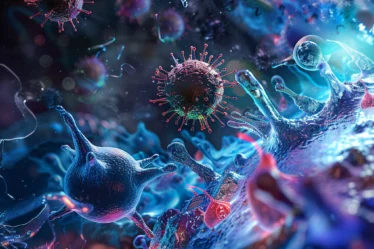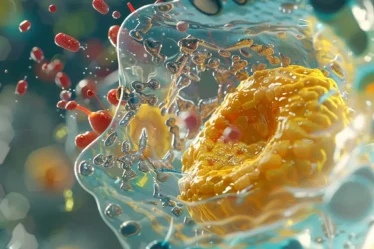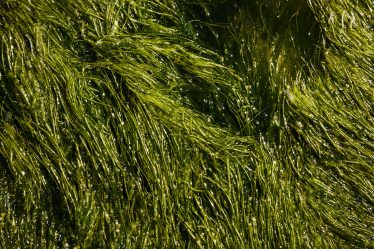
Mimicry is a natural phenomenon in which one organism evolves to resemble another.
This adaptation helps species survive in their environment. Mimicry involves appearance, sounds, behaviors, and even smells. By imitating other organisms, mimics can avoid predators, catch prey, or attract mates. This article explores the concept of mimicry, its importance, and examples from the animal kingdom.
See how microplastics harm marine life and potentially impact our health, and discover how epigenetics can influence our genes and traits.
Essentials of Mimicry and Biomimicry
In a hurry? Don’t worry. Our critical takeaways on mimicry will give you a quick and easy summary of the main points:
🟠 Mimicry in nature involves organisms resembling others to gain survival advantages, such as avoiding predators or attracting prey.
🟠 Molecular mimicry occurs when pathogens imitate host molecules, leading to immune system confusion and sometimes triggering autoimmune diseases.
🟠 Biomimicry uses nature’s designs and processes to inspire innovative technological, engineering, and medical solutions.
Do you need help with biomimicry? That’s okay! Personalized tutoring or interactive biology classes make these topics easier to understand. Explore more biology topics and expand your knowledge with our free Biology blogs.
What is Mimicry?
Mimicry is when one species develops traits to look, sound, or act like another species or object. This trickery helps organisms survive and reproduce. Mimicry is not random; it results from natural selection. Individuals with better mimicry traits survive longer and reproduce more, passing these traits to their offspring. Over time, mimicry becomes more effective.
Definition of Mimicry
Mimicry is an evolutionary strategy where one organism takes on the traits of another. These traits can be physical, like color and shape, or behavioral, like movements and sounds. Mimicry aims to deceive other organisms, helping the mimic avoid danger, find food, or reproduce successfully. This process evolves continually, with mimics improving their deception over generations.
Importance of Mimicry in Nature
Mimicry is essential for survival in the natural world. It allows prey to avoid predators by looking like something dangerous or unpalatable. Predators can also use mimicry to sneak up on prey by appearing harmless or attractive. Mimicry also aids in reproduction; some species mimic potential mates to increase their chances of mating. This strategy is vital for many species to thrive in their ecosystems.
Examples of Mimicry in the Animal Kingdom
Mimicry is common and diverse among animals. The Viceroy butterfly, for example, looks like the toxic Monarch butterfly. Predators avoid Viceroys, thinking they are poisonous Monarchs. The Scarlet Kingsnake mimics the venomous Coral Snake’s color pattern, which protects it from predators. In the ocean, the Mimic Octopus changes color and shape to look like various sea creatures, such as lionfish and sea snakes, to avoid predators and hunt more effectively. These examples show how mimicry helps animals survive and adapt to their environments.
Learn how antibiotics fight bacterial infections and the issue of antibiotic resistance, plus how our immune system uses phagocytes and lymphocytes to protect us.
Types of Mimicry
In nature, mimicry takes several forms, each with unique mechanisms and purposes. These forms include Batesian, Müllerian, aggressive, and automimicry. Each type involves different strategies for survival and adaptation, demonstrating the complexity of evolutionary processes.
Batesian Mimicry
Batesian mimicry involves harmless species imitating the appearance of harmful ones to avoid predators. Named after naturalist Henry Bates, this mimicry is common in insects but occurs in other animals.
In Batesian mimicry, a harmless species evolves to look like a dangerous or toxic one. Predators mistake the mimic for the harmful species and avoid it. This gives the mimic a survival advantage without needing actual defenses.
Examples of Batesian Mimicry
A well-known example is the Viceroy butterfly, which resembles the toxic Monarch butterfly. Birds avoid eating Viceroys, thinking they are Monarchs. Another example is the Scarlet Kingsnake, which mimics the venomous Coral Snake’s distinctive red, yellow, and black banding pattern.
Müllerian Mimicry
Müllerian mimicry occurs when two or more harmful species evolve to look similar. Named after Fritz Müller, this mimicry benefits all involved species by reinforcing predators’ avoidance behavior.
In Müllerian mimicry, multiple species share warning signals like bright colors or patterns, signaling their toxicity or unpalatability to predators. Predators learn to avoid these signals, benefiting all species that share them.
Examples of Müllerian Mimicry
Many toxic butterflies, like the Heliconius butterflies in the tropics, exhibit Müllerian mimicry. They share similar wing patterns, reinforcing the idea to predators that these butterflies are not safe to eat.
Aggressive Mimicry
Aggressive mimicry involves predators or parasites resembling something attractive or harmless to their prey or hosts. This strategy helps them catch prey or exploit hosts more effectively.
In aggressive mimicry, predators or parasites evolve traits that make them look like something desirable or neutral to their prey or hosts. This deception allows them to approach closely without being detected.
Examples of Aggressive Mimicry
The anglerfish uses a bioluminescent lure that looks like prey to attract other fish. Similarly, the zone-tailed hawk mimics the flight pattern of non-threatening vultures, allowing it to get closer to its prey.
Automimicry
Automimicry, or intraspecific mimicry, occurs within a single species. Parts of an organism’s body mimic other parts to deceive predators or prey, providing a survival advantage.
In automimicry, some species members gain an advantage by mimicking other members or parts of their own body. This can involve mimicking more dangerous parts or mimicking a member of the opposite sex.
Examples of Automimicry
The eyespots on the wings of some butterflies resemble the eyes of larger animals, deterring predators. Male bees and wasps that cannot sting may resemble females that can, discouraging predators from attacking them.
Discover the role of cyanobacteria in producing oxygen and its ecosystem impact, and see how nutrient cycles like carbon and nitrogen cycles are essential for life.
Molecular Mimicry
Molecular mimicry is a fascinating biological phenomenon where pathogens imitate host molecules, allowing them to evade the immune system and cause disease. Molecular mimicry highlights the intricate interactions between pathogens and their hosts, demonstrating the complexity of immune responses.
What is Molecular Mimicry?
Molecular mimicry occurs when pathogenic organisms, like viruses and bacteria, produce molecules that closely resemble those of the host. This similarity helps pathogens avoid detection by the host’s immune system, allowing them to establish infections and persist within the host. Molecular mimicry can lead to autoimmune responses, where the immune system mistakenly attacks the body’s tissues.
Molecular Mimicry and the Immune System
In molecular mimicry, the immune system recognizes the pathogen’s molecules as similar to the host’s. This can confuse the immune system, leading it to attack the pathogen and the host’s cells. This cross-reactivity can trigger autoimmune diseases, where the immune system’s attempt to eliminate the pathogen damages the host’s tissues.
Examples of Molecular Mimicry in Diseases
One example is rheumatic fever, a disease that can occur after a Streptococcus infection. The bacteria’s proteins resemble the heart valves, leading the immune system to attack the bacteria and the heart tissue. Another example is Guillain-Barré syndrome, where the immune system attacks peripheral nerves following an infection with Campylobacter jejuni, a bacteria that mimics nerve gangliosides.
Get the scoop on how producers, consumers, and decomposers work together in the food chain and check out different symbiotic relationships such as mutualism, commensalism, and parasitism.
Mimicry in Plants
Mimicry is not limited to the animal kingdom; plants use mimicry strategies to survive and thrive. These strategies help plants attract pollinators, deter herbivores, and ensure successful reproduction.
Plants have developed several mimicry strategies to protect themselves and attract pollinators. Some imitate the appearance of other plants to avoid being eaten by herbivores, and others mimic the appearance or scent of insects to attract pollinators, ensuring the transfer of pollen and successful reproduction.
Examples of Plant Mimicry
One fascinating example of plant mimicry is the orchid species Ophrys, which mimics the appearance and scent of female bees to attract male bees for pollination. Another example is the passionflower, which produces fake egg spots on its leaves to deter butterflies from laying eggs, as butterflies avoid plants already “occupied” by eggs. These strategies showcase the diverse ways plants use mimicry to their advantage.
Biomimicry: Nature’s Inspiration for Innovation
Biomimicry is the practice of drawing inspiration from nature to solve human problems. By studying the designs and processes found in nature, scientists and engineers develop innovative solutions that improve technology, architecture, and various other fields.
What is Biomimicry?
Biomimicry involves emulating nature’s time-tested patterns and strategies to address human challenges. It is based on the idea that through millions of years of evolution, nature has developed efficient and sustainable solutions that humans can learn from and apply in various domains.
Historical Examples of Biomimicry
One of the earliest examples of biomimicry is the invention of Velcro. Inspired by the way burrs stick to animal fur, Swiss engineer George de Mestral developed the hook-and-loop fastening system in the 1940s. Another historical example is the Wright brothers’ study of bird flight, which informed their design of the first successful airplane.
Modern Applications of Biomimicry
Today, biomimicry continues to inspire innovative solutions. For instance, the design of Japan’s Shinkansen bullet train was inspired by the kingfisher’s beak, resulting in a quieter and more efficient train. Additionally, studying shark skin has led to the development of materials that reduce bacterial growth and drag in water. These modern applications highlight the potential of biomimicry to address contemporary challenges in sustainable and effective ways.
Dive into the world of plankton to learn about phytoplankton and zooplankton and explore the fascinating world of protozoa, those tiny single-celled organisms.
Mimicry and Human Applications
Mimicry goes beyond nature and impacts human life in many ways. Scientists and engineers study nature’s mimicry to create new medical, technology, and engineering solutions.
In medicine, mimicry helps in several ways. For instance, researchers develop drugs that mimic natural molecules to work better and have fewer side effects. Vaccines use mimicry to train the immune system to fight diseases. Also, copying natural tissues leads to better medical implants and prosthetics.
Technology and engineering also benefit from mimicry. Velcro, inspired by burrs sticking to fur, is a typical example. The design of the Shinkansen bullet train, inspired by the kingfisher’s beak, reduces noise and boosts speed. Robots that mimic animal movements are more efficient and capable.
Looking ahead, mimicry offers exciting possibilities. Architects can design buildings with natural cooling systems inspired by termite mounds. By mimicking natural substances, new, stronger materials can be developed. Energy-efficient technologies inspired by photosynthesis can improve how we use energy.
Learn how autotrophs and heterotrophs contribute to ecosystems, and learn about toxins, and how they affect our bodies.
Tips for Learning About Mimicry
In this educational overview, we have explored mimicry, including types such as Batesian, Müllerian, aggressive, automimicry, and molecular mimicry. We’ve seen how mimicry plays a role in plants and inspires innovations in biomimicry, medicine, technology, and engineering.
For a deeper understanding, consider seeking a tutor or private teacher who can provide personalized tutoring and lessons. These classes can offer detailed explanations and hands-on experiences to enhance your grasp of this fascinating topic, making learning more effective and enjoyable.
If you’re looking for a biology tutor, try searching for “biology tutor Liverpool” or “biology teacher London” on a platform like meet’n’learn. This can help you find the perfect private teacher for your needs.
If you prefer learning in a group, search for “biology classes Leeds” or “biology lessons Birmingham” online. You’ll find options at community colleges or educational workshops.
FAQs on Biomimicry, Molecular Mimicry, and Others
1. What is mimicry in nature?
Mimicry in nature is when one organism evolves to resemble another to gain advantages such as avoiding predators.
2. What is biomimicry?
Biomimicry involves designing products and systems modeled after biological entities and natural processes.
3. What is molecular mimicry?
Molecular mimicry is when pathogens produce molecules similar to host molecules, leading the immune system to attack the body’s tissues.
4. What are the types of mimicry?
The types of mimicry include Batesian mimicry, Müllerian mimicry, aggressive mimicry, and automimicry.
5. How does Batesian mimicry work?
In Batesian mimicry, a harmless species imitates the appearance of a harmful species to deter predators.
6. What is Müllerian mimicry?
Müllerian mimicry is when two or more harmful species evolve to look similar, enhancing their protection from predators.
7. How does aggressive mimicry function?
Aggressive mimicry involves predators or parasites mimicking a harmless or beneficial species to approach their prey or host undetected.
8. Can plants exhibit mimicry?
Yes, plants can exhibit mimicry by imitating other plants or objects to attract pollinators or avoid herbivores.
Are you considering a future in microbiology? Discover the curriculum and possible job opportunities.
References:
1. Study.com
2. Britannica
3. Wikipedia



